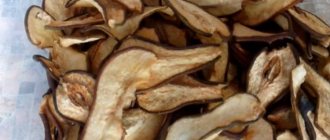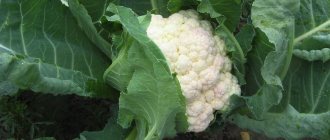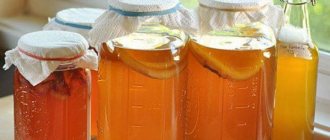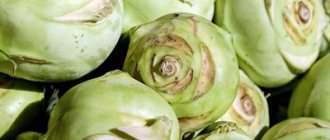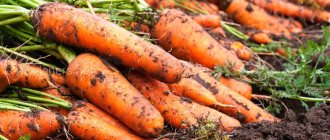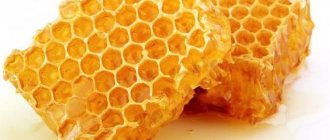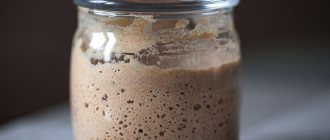Kohlrabi cabbage is a stem fruit that looks like a turnip. This vegetable tastes like the stalk of young white cabbage, only sweeter and more tender. It contains a large amount of fiber, potassium, copper, vitamin C and other useful substances. Kohlrabi is purple and green in color, but only on the outside. It's white inside.
The fruit retains its nutritional properties even during heat treatment and grows well and quickly. For winter storage, you must carefully select the cabbage variety.
Features of the influence of the kohlrabi variety on the shelf life index
Different types of kohlrabi cabbage are characterized by different degrees of shelf life, so before planting this crop on your site, you need to analyze information about the selected variety and decide how suitable it is for long-term storage.
Did you know? Kohlrabi was used in ancient Rome as food for the poor and slaves.
The shelf life of a vegetable is influenced by the following characteristics of the variety:
- ripening time - the fruits of late varieties of kohlrabi have a denser structure and are stored better than early ripening varieties of cabbage;
- color of the vegetable - varieties with purple stems are best stored, and white-green varieties of cabbage can only remain fresh for a short period of time;
- resistance to lignification - during long-term storage, cabbage pulp often becomes hard, which leads to a deterioration in the taste of the product.
The following varieties of kohlrabi have the highest shelf life:
- Giant;
- Violet;
- Globe;
- Hummingbird;
- Kossak F1;
- Delicacy blue;
- Piquant;
- Gusto;
- Goliath blue;
- Sonata F1.
Harvesting kohlrabi cabbage (rules)
The question “how to store kohlrabi” largely depends on timely and correct harvesting. Cabbage harvested on time can be stored for a long time, and this is an indisputable fact.
For harvesting, choose a fine day without rain or frost. Although kohlrabi cabbage is frost-resistant and can withstand temperatures down to -4 °C - 5 °C, it will be better if the cabbage is harvested on warmer days. Important. Fruits not frozen by frost are stored better. Therefore, we harvest at a temperature of + 3 ° C - 5 ° C (before frost).
On a note!
Stem fruits that have reached a diameter of 7 cm - 8 cm are considered the best for harvesting. Here, if the cabbage is overgrown, it becomes tougher and more fibrous. In addition, the taste becomes worse.
For longer storage, cabbage is dug up by the roots. Well, if you don’t plan to store it for a very long time, then the leaves and roots can be cut off. Here, we leave the petioles from the leaves within 2 cm. And such trimmed cabbage can be stored for 1 month.
Cleaning time
Kohlrabi harvests are calculated based on the ripening time of cabbage. Here, early varieties ripen in 50-70 days, average ones in 80-120 days, and late ones in 120-180 days. Also, the region and weather conditions are necessarily taken into account here. For example, in the northern regions there is a short summer, and late cabbage will not have time to ripen there. We think.
Harvest time and preparation for storage
The pulp of overripe stem fruits quickly becomes hard, so you need to correctly determine the time for harvesting kohlrabi so that the product fully retains its taste and texture. The exact timing of cabbage harvesting depends on the characteristics of the particular variety, but this procedure is recommended to be carried out immediately after the diameter of the stem reaches 8 cm.
Important! The kohlrabi harvest must be harvested at a temperature of at least +3...+5°C, since under the influence of frost the shelf life of cabbage sharply decreases.
Basic rules for harvesting stem crops and tips for preparing them for long-term storage are listed below:
- choose a dry and clear day for harvesting - in rainy weather, vegetables absorb excess moisture and may rot during storage;
- the plant is removed from the soil along with the roots, pulling it out by the tops;
- the surface of the fruit must be protected from mechanical damage - scratches and dents cause rapid rotting of the pulp;
- vegetables are carefully cleaned with hands from earthen lumps;
- damaged and rotten stem fruits are not suitable for storage, so they are discarded;
- for long-term storage, the root system is not cut off, and the leaves are cut at a distance of about 2 cm from the stem;
- The collected cabbage is laid out in a dark and dry place for 1.5–2 hours to dry.
Variety selection and harvesting
How to store kohlrabi cabbage for the winter and when should it be harvested? For the longest storage of this vegetable, late varieties .
Dark (purple, blue) varieties are best suited for this
good keeping quality : Giant, Violetta, Kossak F1, Delicacy Blue. White varieties are practically unsuitable for long-term storage.
Kohlrabi cabbage is harvested when the stem fruits have reached a size of 7-8 cm in diameter . As they outgrow, they become hard and are very inferior in taste to well-ripened stem fruits.
This should be done, as in the case of ordinary white cabbage, on a sunny day before the onset of good frosts , when the temperature outside is +3-5 degrees.
Although kohlrabi is relatively cold-resistant and can easily withstand temperatures down to -4-5, to effectively preserve the crop, it is better to harvest it on warmer days .
If you plan to store cabbage for a long time, then the sable fruits must be pulled out of the soil along with the roots. If long-term storage is not envisaged, and it needs to be stored for no more than a month, then the root with the stalk can be cut off.
The leaves of the stem fruit must be removed, leaving small petioles up to 1.5-2 centimeters long . The cut leaves can be eaten in the same way as its stem fruit. They can be stored in the refrigerator in bags for 2-3 days.
You can find out how and when to harvest Brussels sprouts and cauliflower on our website.
Optimal conditions for long-term storage of kohlrabi
Even those varieties that are characterized by good shelf life will quickly deteriorate if improperly stored in unsuitable microclimate conditions. That is why the following requirements must be met in a room for long-term storage of kohlrabi:
- air temperature is about 0...+2°С - in a warmer room the product can be stored for no longer than 1–2 weeks;
- high air humidity of at least 95% will help keep the stem fruits juicy and tasty;
- protection from sunlight - in the light the pulp of vegetables quickly deteriorates;
- Having a good ventilation system prevents the growth of bacteria and mold.
Ways to store cabbage at home
At room temperature, kohlrabi cabbage can remain fresh for only a few days, so for longer storage the vegetable must be kept in special conditions. You can process the product by preparing tasty canned preparations from it, but in this case, kohlrabi will partially lose its taste and beneficial chemical composition. To be able to enjoy fresh vegetables until the coldest weather, they use various methods of storing them, listed later in the article.
Learn about recipes for preparing kohlrabi cabbage for the winter.
In a refrigerator
In a city apartment, you can increase the shelf life of fresh kohlrabi cabbage using the refrigerator. This method allows you to keep the product fresh for up to 5 weeks, provided that the stem fruits have been properly prepared.
Basic rules for storing kohlrabi in the refrigerator:
- lightly shake off fresh vegetables from dirt and cut off their tops - it is recommended to leave small cuttings so that harmful microorganisms do not penetrate through the damaged pulp;
- wrap the stems in thick paper or a damp cloth and place them in a plastic bag, leaving it slightly open - this will prevent rot from occurring on the cabbage as a result of stagnant air;
- the cut tops can be placed in a separate bag and also placed in the refrigerator;
- Kohlrabi should be stored in the vegetable drawer located at the bottom of the refrigerator.
In the cellar or basement
The most common way to store large quantities of fruit is in a cellar or basement. In such a room you can create optimal microclimate conditions under which the product will be stored for 3–5 months.
Important! To keep kohlrabi juicy and tasty longer during storage in the cellar, it is recommended to place it with the roots down.
Basic rules for storing kohlrabi cabbage in a cellar or basement:
- the prepared stem fruits are placed in a box or wide basket, placing them not too tightly together;
- in a container with cabbage, pour a layer of wet sand so that it partially covers the vegetables, and then cover them with film, leaving a hole for free access of air;
- It is recommended to place boxes and baskets with cabbage on racks or gratings - this will protect the product from rotting and rodents;
- you can spread a layer of wet sand about 7–10 cm thick on the floor of the storage room and lay out kohlrabi on it, placing them at a short distance from each other, but this storage method can only be used if there are no pests and rodents in the room;
- each stem can be placed in a net and hung vertically from the ceiling at a distance of at least 3 cm from each other - at the same time, there must be air circulation in the cellar so that the suspended cabbage does not rot.
On the balcony
If a city apartment has a glazed balcony or loggia, where the air temperature remains above zero during the winter, then they are also suitable for storing the product. But this method allows you to keep the product fresh for only 1 month.
Basic recommendations for storing stem fruits on the balcony:
- you can vertically hang kohlrabi from clotheslines using wire hooks, securing them to the root part of the vegetables;
- cabbage is stored well in wooden boxes;
- if the air temperature on the balcony drops below 0°C, then it is necessary to provide a heating system.
Vegetables should be placed at a distance of 3–5 cm from each other so that they do not start to rot.
In the freezer
Fresh kohlrabi lasts the longest in the freezer. At the same time, it partially loses its original taste, but frozen vegetables can be used for 6–9 months.
Did you know? Kohlrabi leaves contain 2
–
3 times more vitamins than stem fruits, so it is recommended to use plant tops for making fresh salads. Step-by-step instructions for freezing stem fruits are presented below:
- Rinse the cabbage thoroughly under running water and peel it.
- Cut the fruits into small pieces. Immerse them in boiling water for 2-3 minutes, and then immerse them in a container of ice water.
- Place the blanched cabbage pieces in a colander to drain excess water. After this, lightly dry the vegetables by blotting them with a napkin.
- Place kohlrabi in plastic containers or plastic bags, avoiding moisture getting inside the container. Place in the freezer.
You can grate the stem vegetables on a coarse grater and freeze them without blanching - this will preserve the maximum amount of nutrients in the cabbage.
How to store kohlrabi (methods)
There are several ways to store kohlrabi cabbage. For example, storage in a cellar or basement (the best way), in the refrigerator, in the freezer, and can also be dried and canned. Later in the article, we will look at these methods in more detail. Let's go?
Storing kohlrabi in a cellar or basement
I think everyone who has it knows how to store kohlrabi in a cellar/basement. Basically, these lucky people are the owners of country houses. There shouldn’t be any problems here, even if the harvest is huge, there will still be enough space.
To begin with, before laying it is necessary to disinfect the room. Here you can use a sulfur bomb or treat it with copper sulfate.
Storage in boxes, baskets and racks
. Here, we place it loosely in a container (any kind) and cover it with damp sand, and cover it loosely with film (this is important). Otherwise, kohlrabi will quickly begin to deteriorate.
As an option, sand is poured onto the floor and stuck into it, as if planting heads of cabbage with the stalk down. Important
. Here, you need to have some distance between the cabbage.
Hanging storage
. In the basement we stretch a wire under the ceiling and hang kohlrabi cabbage on it. Here, it is important that the cabbage has roots, and then storage will be longer. The cabbage should not touch each other.
Useful tips for gardeners
Using the methods listed above, you can successfully store kohlrabi throughout the winter, but experienced gardeners advise using a few more tricks to extend the shelf life of the product.
The main ones are presented below:
- during short-term storage in the refrigerator, you can completely cut off the leaves and root part of the cabbage - this will reduce the evaporation of moisture;
- Before storing, harvested vegetables should not be washed - cabbage saturated with moisture is more easily susceptible to rotting;
- Sudden changes in air temperature in the storage should not be allowed - this will make the cabbage pulp hard and fibrous;
- if the air in the basement is too dry, then you can place containers of water in the corners of the room;
- when storing vegetables in the refrigerator, stem fruits must be stored separately from the tops - the leaves will absorb moisture from the cabbage, as a result of which its pulp will lose its juiciness;
- It is not recommended to keep kohlrabi at temperatures below -18°C - in this case, the vegetables lose most of their vitamins;
- You cannot refreeze cabbage - the product will completely lose its taste and lose its beneficial chemical composition.
Important! During storage, kohlrabi fruits should be inspected 2 times a month, removing damaged and rotting specimens.
Kohlrabi cabbage can be a tasty and healthy addition to a person's fall-winter diet. Using the tips presented in this article, you can choose a variety with the best shelf life, and the listed storage methods will significantly extend the period of eating fresh and juicy stem fruits.
The best varieties of kohlrabi cabbage. Cleaning and storage
Particular attention must be paid to the choice of variety. Early ripening hybrids, which are preferably consumed immediately, are the least likely to remain fresh. For long-term storage, late varieties are best suited, characterized by a denser structure and excellent shelf life. Purple kohlrabi varieties last the longest. Here are the best cabbage varieties for storage:
- Violet;
- Globe;
- Giant;
- Kossak F1;
- Natalka.
White varieties are not suitable for harvesting for the autumn-winter period due to poor keeping quality.
Collection rules and secrets:
- Kohlrabi is harvested when the stems reach a diameter of 7 to 8 centimeters;
- In overgrown fruits, the pulp becomes hard and begins to taste bitter;
- It is necessary to harvest on a dry and sunny day, before frost sets in, at an outside temperature of +3 to +5 degrees;
- Stem fruits that are planned to be stored for a long time must be pulled out of the soil along with the root system;
- When cutting leaves, it is necessary to leave small petioles of 2 to 3 centimeters for better storage of cabbage;
- If long-term storage of kohlrabi is not planned, then you can cut off the root and stalk. Such a stem fruit will be good for no more than a month;
- Cut leaves can be added to various salads, as they are very healthy and tasty;
- They can be stored in bags in the refrigerator for two to three days.
Cleaning and storage in moss:
In the cellar or basement
The best place to store kohlrabi in winter is the cellar. The permissible humidity in the cellar is from 95%, and the temperature range is from 0 to +5 degrees Celsius. Under these conditions, early varieties of cabbage can be stored for up to two months, and later varieties can be stored for several months longer. When stored in the cellar, kohlrabi will not lose its beneficial properties. Not all fruits are suitable for storage. It is necessary to discard stem fruits:
- Immature, small (less than seven centimeters);
- With traces left by pests or diseases;
- With damage (dents, cuts, etc.).
ATTENTION: Under no circumstances should you wash the stem fruit. It must be dry and free of soil residues.
Storing cabbage in basements or cellars is possible in several ways:
- Prepared vegetables with trimmed leaves are placed in boxes or baskets. The stem fruits must be laid with their roots down, then sprinkled with slightly damp, clean sand on top. Cover the top with plastic wrap. Do not close it very tightly, otherwise the cabbage may collapse and rotting will begin. It is allowed to lay out the heads of cabbage on special gratings or in compartments;
- You can also store cabbage in the cellar on the floor in moistened sand. It is necessary to spread a layer of sand, at least 7-10 centimeters thick, on the ceiling. Stick the kohlrabi into the sand, roots down, avoiding the fruits touching. Otherwise they will certainly spoil;
- Sometimes it is recommended to hang cabbage for the winter on a wire or rope from special hooks on the ceiling. A very important condition here is a fairly free arrangement of the fruits. The distance between adjacent fruits should be at least 2-3 cm.
Freezing
Kohlrabi can also be stored in the freezer in winter. This is a very good way. And although frozen vegetables are not entirely suitable for preparing fresh salads, they will nevertheless retain all nutrients and vitamins in full.
The freezing technology is as follows:
- The stem fruits need to be washed thoroughly;
- To peel;
- Cut into pieces about 2 cm thick;
- Place in boiling water for a couple of minutes;
- then quickly transfer to very cold water (preferably ice);
- Drain in a colander;
- Dry by placing on a towel;
- Place into individual bags or containers;
- Store in the freezer.
You can grate the cabbage on a coarse grater. This cabbage does not require blanching. You can immediately put it into bags and put it in the freezer. In this form, cabbage is perfectly stored for up to 9-10 months.
Fresh in the refrigerator
If you don’t have a cellar, you can store the stem fruit in the refrigerator. Immediately after harvesting kohlrabi, it is necessary to cut off the roots and leaves, leaving cuttings from 8 to 10 centimeters. This is necessary so that the greens do not draw juices from the rhizome, otherwise the fruit will quickly become flabby. The likelihood of infection entering, causing rotting, is also reduced.
Each stem fruit must be wrapped in paper or cotton cloth. Then place the vegetables in a plastic bag, which should not be tightly tied to allow air access. You don't have to wrap the cabbage in paper; just put a damp cloth in the bag. Thanks to this method, the vegetable will remain tasty and fresh for two months.
IMPORTANT: Do not wrap kohlrabi in newsprint, due to the presence of elements hazardous to human health in the printing ink.
